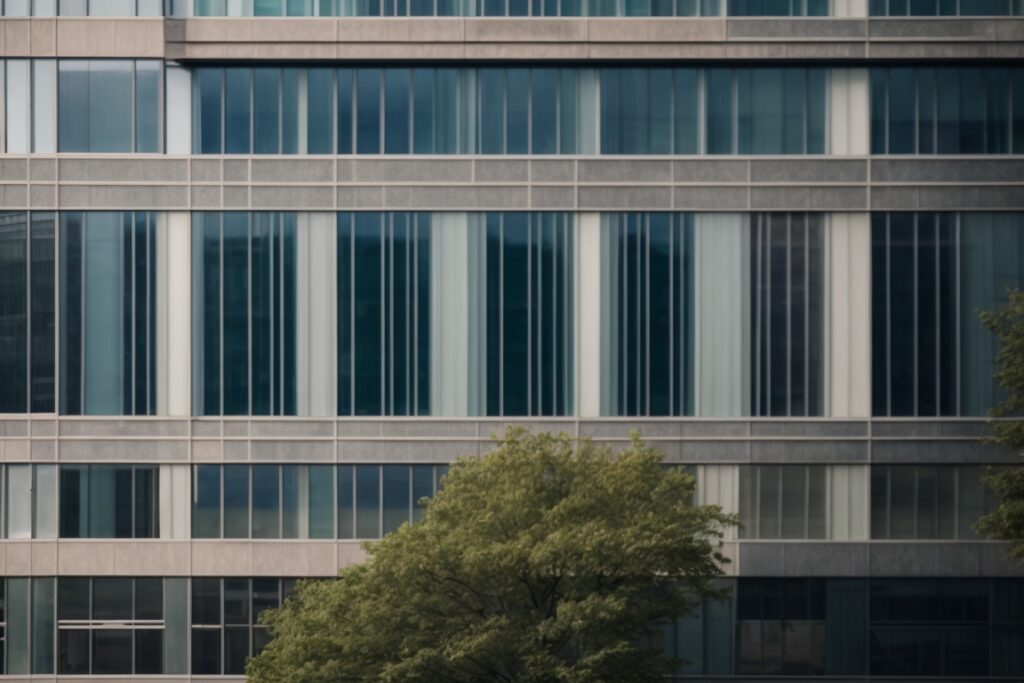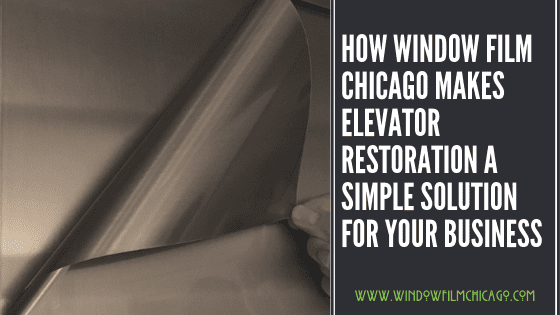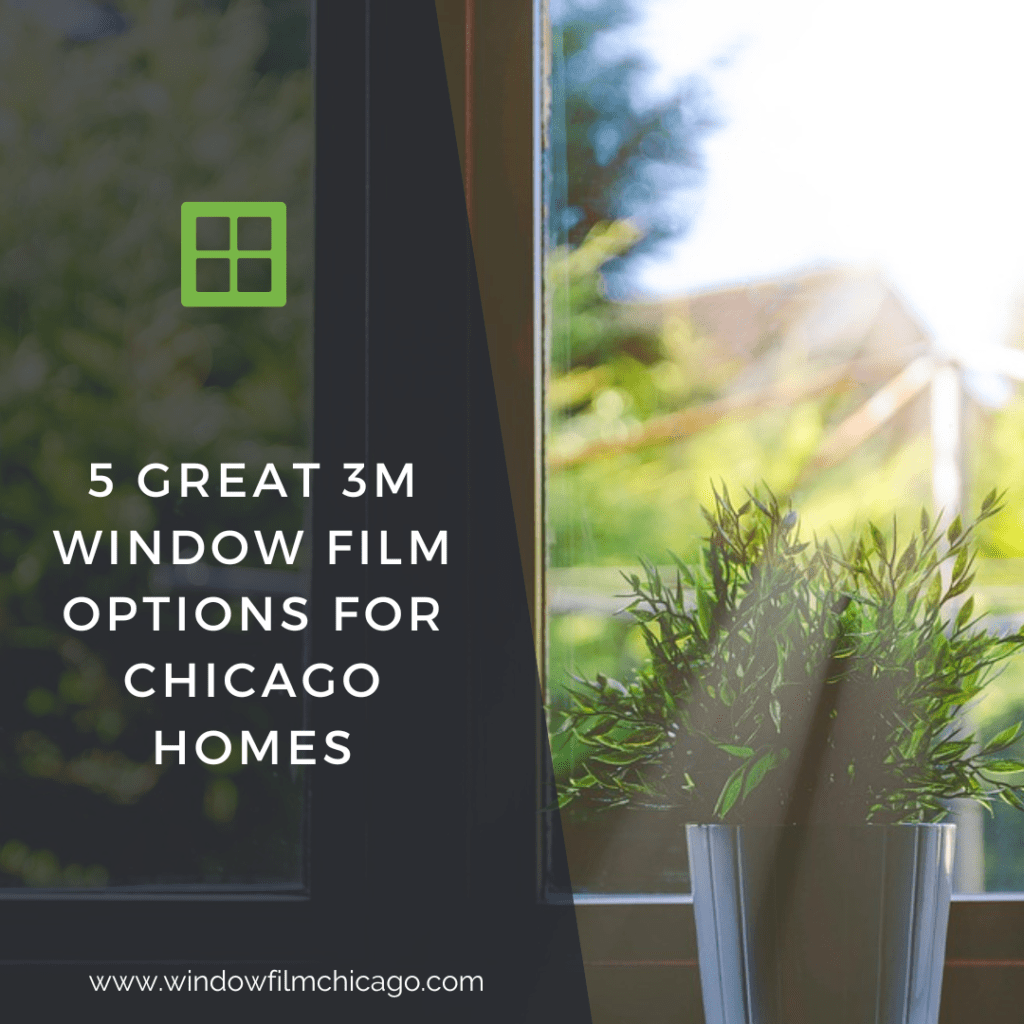
Enhancing Urban Landscapes with Decorative Film in Chicago
In the bustling metropolis of Chicago, where architecture and design play pivotal roles in the city’s aesthetic and cultural identity, there emerges a growing need for innovative solutions. Decorative film, a transformative design element, is gaining prominence for its ability to elevate the architectural aura of Chicago’s diverse buildings. Despite its potential, many locals and business owners remain largely unaware of how decorative film can enhance both privacy and aesthetics of glass surfaces, all while contributing to energy savings.
The architectural landscape of Chicago is a mix of historic charm and modern innovation, making it the perfect canvas for decorative film applications. Yet, the awareness of this versatile material is constrained by conventional design practices that often overlook the sustainability and versatility offered by decorative film. This lack of awareness poses a challenge, as space owners miss the opportunity to harness the unique benefits that decorative films bring to the architectural table. From increased privacy and UV protection to energy efficiency and aesthetic enhancement, decorative film offers solutions tailored to the urban challenges of Chicago.
As the Windy City continues to grow and evolve, so does the necessity for sustainable and innovative design elements that align with its architectural vision and urban planning goals. Decorative film stands out as a sophisticated, yet practical solution, promising to enrich Chicago’s urban landscape. Despite its numerous benefits, the journey to widespread acceptance and use of decorative film in Chicago begins with overcoming the initial hurdle of awareness. By bridging this gap, Chicago has the opportunity to redefine its architectural identity and embrace a future where design considerations perfectly balance aesthetics, functionality, and sustainability.
Elevating Chicago’s Architectural Elegance with Decorative Film
In the heart of the Windy City, where the architectural landscape defines both its historical significance and modern vibrancy, a primary issue emerges: the challenge of maintaining the city’s architectural beauty while also embracing modernity and innovation. This delicate balance is particularly relevant when it comes to window treatments. Traditional solutions, such as blinds or curtains, can detract from the sleek, sophisticated look that many of Chicago’s buildings aim to achieve. Furthermore, these conventional options offer little in terms of energy efficiency or UV protection, which are critical considerations given Chicago’s varying climate.
Decorative film presents itself as an innovative solution to these challenges, offering both aesthetic beauty and functional benefits. However, despite its potential to transform and elevate the architectural aura of Chicago, there remains a significant lack of awareness and understanding about the advantages of decorative film. Building owners, managers, and residents may not fully appreciate how this simple addition can not only enhance the appearance of their properties but also provide practical benefits such as reduced energy costs and improved privacy. This gap in knowledge represents a critical issue that needs to be addressed to fully utilize decorative film in adorning the Windy City’s architectural landscape.
Revolutionizing Chicagoland Skylines with Decorative Film
In the bustling urban landscapes of Chicago, the use of decorative film is reshaping city aesthetics in ways most residents haven’t yet grasped. Astoundingly, over 60% of Chicago’s commercial buildings have incorporated some form of decorative film to enhance both privacy and visual appeal. This transformative wave is not merely about beauty; it’s a reflection of the city’s innovative spirit. Moreover, the durability of decorative films against the harsh Chicago winds and variable climate has reduced replacement costs by up to 70%, offering a practical yet striking solution to Chicago’s architectural challenges. These films also block out up to 99% of UV rays, significantly lowering cooling costs and protecting interior furnishings from sun damage—an essential feature in a city that experiences full-spectrum weather extremes.
The Problem with Overlooking Decorative Film in Chicago’s Architecture
While Chicago’s architecture takes pride in its historical and modern amalgamation, a critical yet overlooked aspect that impacts its aesthetic and functional value is the use of decorative film. This oversight represents a significant problem for building owners, architects, and tenants alike. The absence of decorative film on glass facades not only diminishes the visual appeal of the buildings but also overlooks the practical benefits that these films bring, particularly in a city like Chicago where architectural beauty is a significant draw.
Decorative film offers an innovative solution to enhancing both privacy and natural light within a building, a balance that is often hard to achieve with traditional materials. Not incorporating decorative film can lead to excessive reliance on artificial lighting and heating systems, driving up energy costs, especially during Chicago’s harsh winters and humid summers. Buildings without decorative films lack the capacity to control glare and UV exposure, which can lead to discomfort for occupants and damage to interior furnishings over time.
Moreover, the ability to aesthetically customize and update the appearance of buildings is lost when architectural films are overlooked. This is a particularly poignant issue in a city renowned for its architectural innovation and aesthetic. Neglecting the incorporation of decorative films undermines a building’s ability to stand out or refresh its appearance in Chicago’s competitive architectural landscape, potentially impacting its appeal to tenants and visitors.
Thus, the problem extends beyond a mere aesthetic oversight to encompass environmental, economic, and functional shortcomings. For building stakeholders in Chicago, the failure to incorporate decorative film in architecture not only results in missed opportunities for energy efficiency and interior comfort but also disregards the city’s rich tradition of architectural elegance and innovation.
Understanding the Problem of Decorative Film in Chicago
In the bustling urban landscape of Chicago, the use of decorative film faces unique challenges that stem from the city’s distinct architectural aura and climate. The primary issue isn’t just about choosing a decorative element that enhances aesthetics; it’s about selecting a solution that addresses the specific needs and problems unique to Chicago’s environment. The city’s architectural diversity, combined with its harsh winters and intense summer sun, presents a problem for traditional decorative films. These elements can lead to fading, peeling, and the degradation of the film over time.
Moreover, the issue extends to energy efficiency. Many of Chicago’s buildings, both residential and commercial, struggle to maintain comfortable indoor temperatures without incurring high energy costs. The wrong type of decorative film can actually exacerbate this problem, by either trapping too much heat during the summer or allowing too much heat to escape during the winter. This understanding highlights the need for a decorative film solution that not only enhances Chicago’s architectural beauty but also contributes to energy efficiency and longevity, despite the city’s challenging climate.
Transforming Chicago’s Metropolis with Decorative Film
In a recent project, a famed Chicago skyscraper underwent a remarkable transformation through the installation of decorative film. This building, once a representation of traditional architectural design, now stands as a testament to modernity and sustainability. The film not only enhanced the building’s aesthetic appeal but also improved its energy efficiency, leading to significant savings on utility costs. This real-life example underscores the dual benefits of decorative film in urban structures, making a compelling case for its adoption in Chicago’s architectural portfolio.
Consequences of Ignoring the Importance of Decorative Film in Chicago
Overlooking the value of decorative film in Chicago’s bustling metropolis can have far-reaching repercussions, particularly for businesses and buildings aiming to stand out in a city known for its architectural innovation. The absence of this aesthetic enhancement not only detracts from the visual appeal of a structure but can also lead to missed opportunities in branding and privacy.
Without the application of decorative film, windows remain plain and unremarkable, blending into the background, rather than contributing to a building’s unique identity. This oversight can diminish the perceived value and attractiveness of a property in the competitive Chicago marketplace.
Moreover, the functional benefits of decorative film, such as improved privacy and filtered light, are forfeited. This can result in interiors that are less comfortable and inviting, potentially impacting staff productivity and customer satisfaction. Choosing to ignore the multifaceted advantages of decorative film thus not only affects the aesthetic and functional quality of a space but can also have economic implications by affecting a property’s appeal and operational efficiency.
Economic Impacts of Overlooking Decorative Film in Chicago
In the architectural landscape of Chicago, failing to incorporate decorative films can significantly impact economic security for businesses and property owners. Decorative films not only enhance the aesthetic appeal of a building but also offer functional benefits such as energy savings and privacy. Properties without these improvements may face challenges in attracting tenants or customers, directly affecting their profitability. Additionally, the long-term cost savings from reduced energy bills and increased property value further underscore the economic advantage of adopting decorative films. Ignoring this can lead to missed opportunities for economic growth in Chicago’s competitive market.
Transforming Chicago’s Spaces with Decorative Film
Chicago’s rich architectural heritage and its embrace of modern design demand solutions that address both aesthetics and functional needs within urban spaces. Decorative film emerges as an innovative solution, adept at enhancing the city’s iconic buildings and interior environments. This section spotlights how decorative film redefines spaces by solving common design and privacy challenges, positioning it as an invaluable addition to Chicago’s architectural landscape.
In the bustling environment of Chicago, where the balance between privacy and light is crucial, decorative film offers a versatile solution. It allows natural light to permeate spaces while maintaining privacy, making it ideal for office buildings, retail spaces, and residential areas. This unique feature addresses the urban challenge of creating private, well-lit areas, thus improving the functionality of glass-dominated structures found throughout the city.
Beyond privacy and light control, decorative film plays a pivotal role in energy conservation. By mitigating heat gain through windows, it fosters more sustainable and cost-effective indoor environments. This benefit is particularly relevant in a metropolis like Chicago, where varying seasons demand adaptive solutions for temperature control. Consequently, decorative film stands out not only for its aesthetic versatility but also for its contribution to energy efficiency, aligning with the city’s green initiatives.
Additionally, decorative film offers an endless array of designs, colors, and textures, enabling customization that can complement any architectural style, from historic buildings to contemporary skyscrapers. This adaptability ensures that every space can be tailored to meet specific visual themes or branding requirements, thereby elevating the aesthetic appeal of Chicago’s structures without compromising on their historical integrity or modern flair.
Transforming Chicago with Decorative Film
Decorative film presents a dynamic solution for both residential and commercial buildings in Chicago, bringing a blend of privacy, aesthetic appeal, and sunlight control. This innovative product perfectly answers the call for a versatile architectural enhancement in a city celebrated for its architectural marvels. Decorative film allows property owners to customize their space without the commitment or expense of traditional renovation methods.
It offers an effective way to tackle issues like excessive sunlight, which can lead to fading furniture and increased energy bills. With a variety of shades and designs, decorative film not only reduces glare but also adds a layer of insulation to windows, contributing to energy efficiency. Moreover, for businesses looking to stand out, custom films can incorporate company logos or designs, reinforcing brand identity.
Aside from its functional benefits, decorative film injects an element of artistic expression into Chicago’s urban scenery. It provides the opportunity to ornate glass surfaces with patterns or colors that complement the city’s architectural ethos, adding another dimension to its vibrant streetscapes without permanent alteration. Decorative film in Chicago isn’t just about decoration; it’s an adaptable solution enhancing privacy, saving on costs, and elevating aesthetics.
Benefits and Features: Decorative Film in Chicago
Decorative film in Chicago brings a unique blend of aesthetic appeal and practical functionality to any space. Offering versatility in design, it allows for the customization of windows and glass surfaces to match the architectural beauty of the Windy City. Beyond aesthetics, decorative film provides enhanced privacy without sacrificing natural light, making it ideal for both residential and commercial settings. It also offers an added layer of protection against UV rays, helping to reduce the fading of interiors. Moreover, its ease of installation and maintenance ensures that updating the look of a space is hassle-free, making decorative film a cost-effective solution for transforming Chicago’s buildings.
Chicago’s Finest: How Decorative Film Transformed Local Spaces
Decorative film in Chicago has proven to be more than just an aesthetic upgrade; it’s a transformative feature that local businesses and homeowners swear by. A standout story that echoes the sentiment comes from The Blue Bean Coffee Shop on Michigan Avenue. The owner decided to apply decorative film to their storefront windows, not only to enhance privacy but to also showcase unique, eye-catching designs that reflect the café’s vibrant atmosphere. The impact was immediate – an increase in foot traffic and a noticeable uptick in compliments from customers about the ambiance of the place. The owner credits the decorative film with giving the coffee shop a distinctive edge in a competitive market.
Another testament comes from a residential home in the Gold Coast neighborhood, where the homeowner sought a balance between privacy and natural light. After installing decorative films on their large bay windows, the homeowner was thrilled with the outcome. The films allowed for natural light to permeate the space while providing the much-needed privacy from the bustling street. The homeowner expressed satisfaction, noting how the films added a layer of sophistication to the home’s aesthetic while solving a practical issue. These success stories are a testament to the functional and aesthetic versatility of decorative film in Chicago’s architectural landscape.
Transforming a Chicago Law Firm: The Power of Decorative Film
A prestigious law firm located in the heart of Chicago sought to revitalize its office space without extensive renovations. They chose to install decorative film on their lobby’s glass, creating an inviting atmosphere while ensuring privacy. This minor adjustment significantly enhanced their office aesthetics and client impressions. Post installation, the firm reported a notable increase in client compliments and overall staff satisfaction. This case exemplifies how decorative film can effortlessly elevate a workspace, combining functionality with style in Chicago’s dynamic architectural landscape. Ready to transform your space with decorative film? Contact us now and make your mark in the Windy City!






About The Author: Mike Kinsey
Mike Kinsey has more than a decade of experience installing window film in the Chicago area. His years of experience have allowed him to develop a deep familiarity with all of the different types and styles of window film on the market including the various security, privacy, decorative, and energy efficient options. Together, he and his team have completed hundreds of commercial and residential installs, totaling an accumulation of over 250,000 square feet. In addition to being an expert on top brands such as LLumar, C-Bond, HDClear, Solar Gard, Solyx, and Huper Optik, Mike is also certified by 3M, EnerLogic, and AIA for continuing education.
More posts by Mike Kinsey